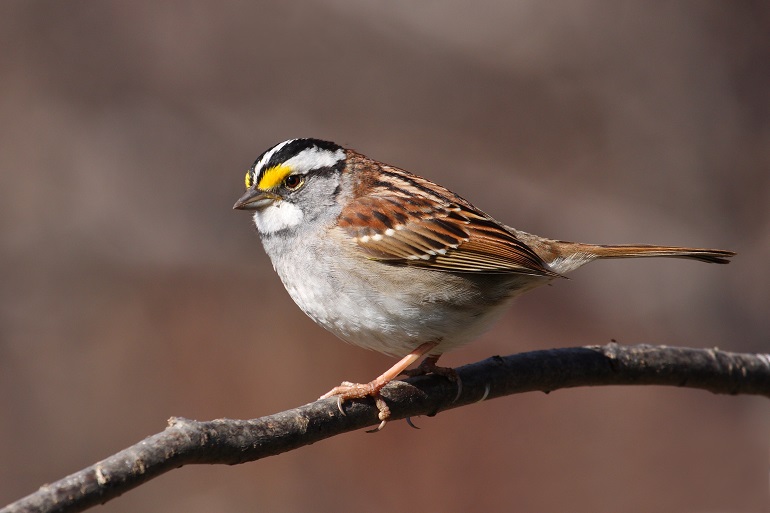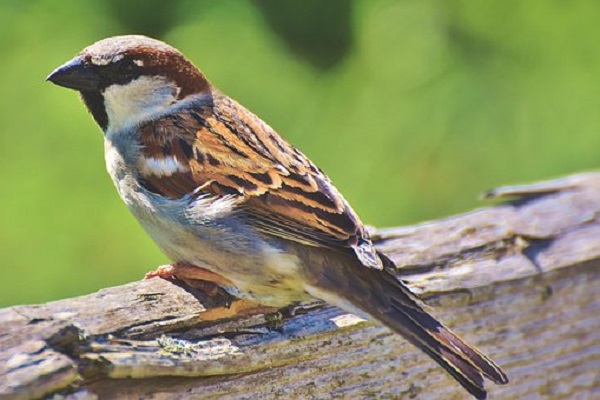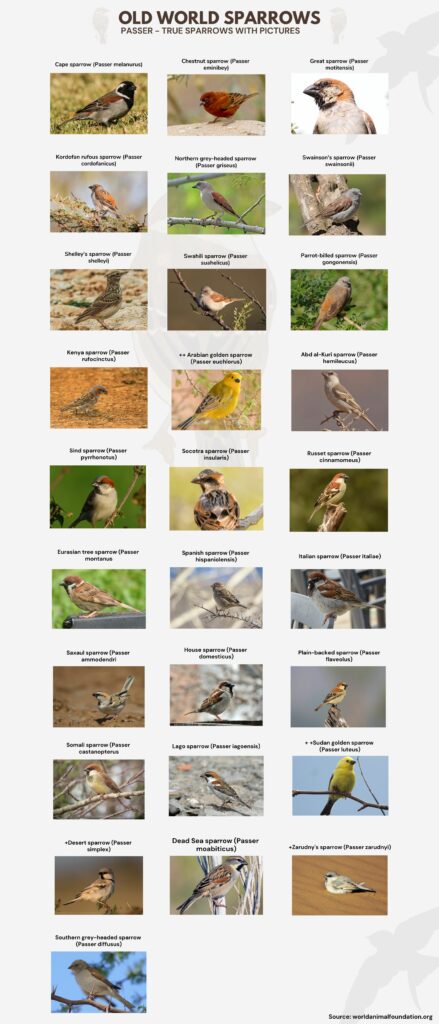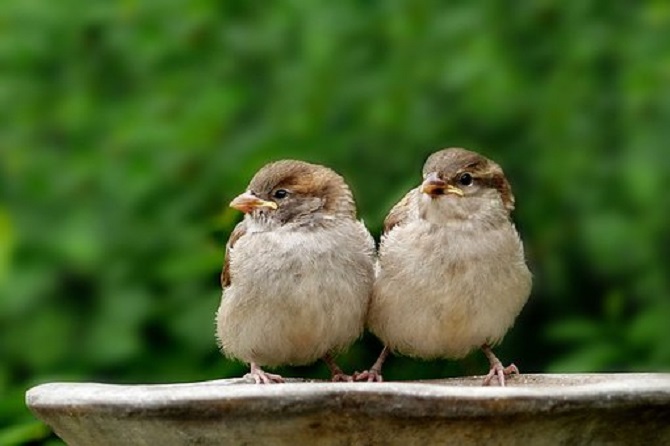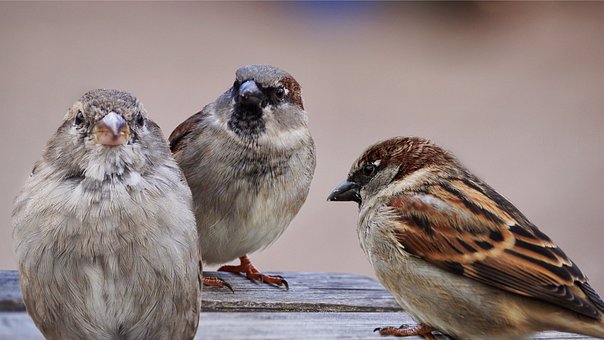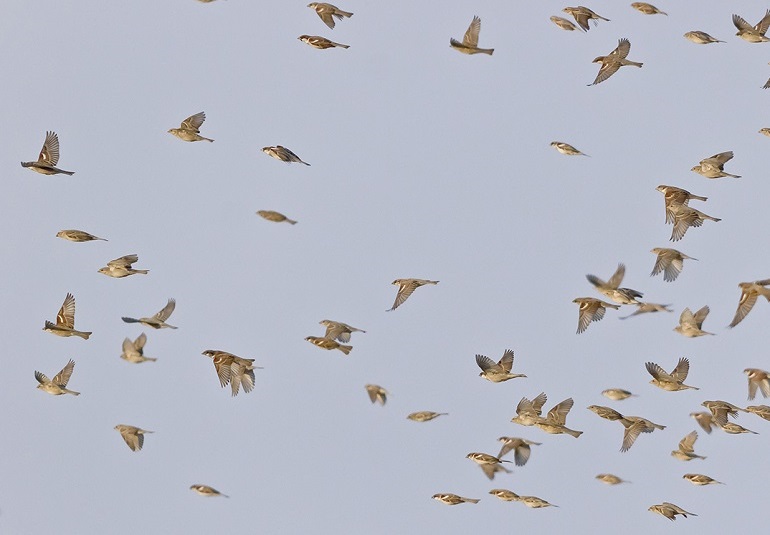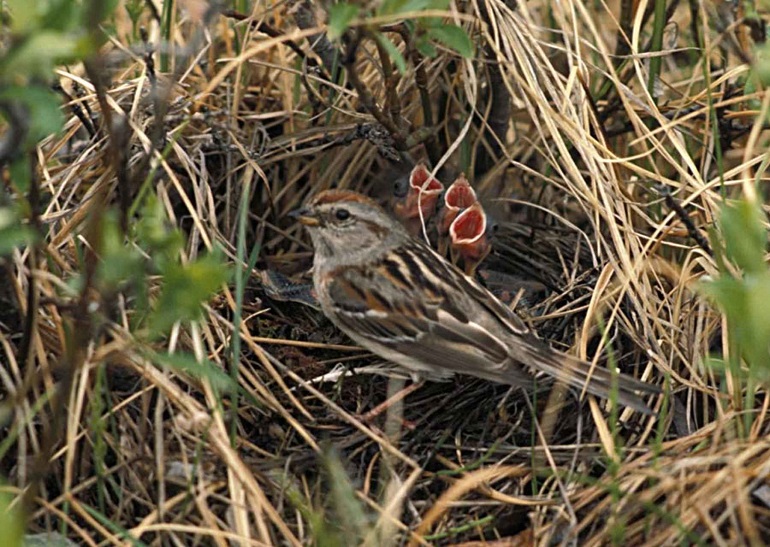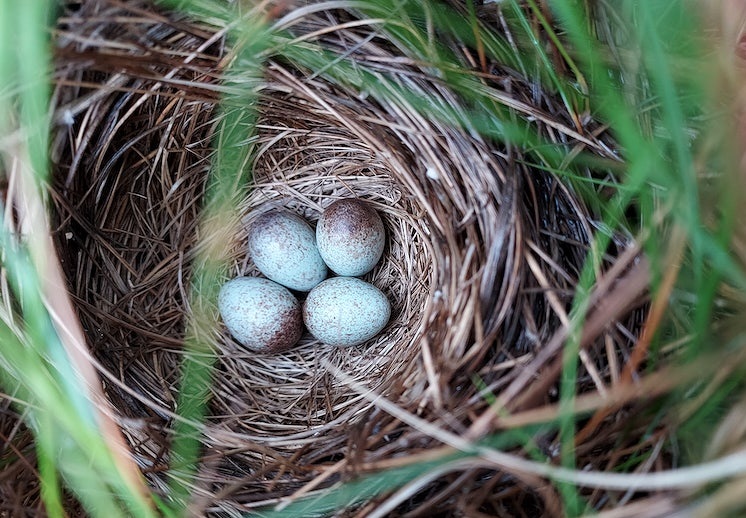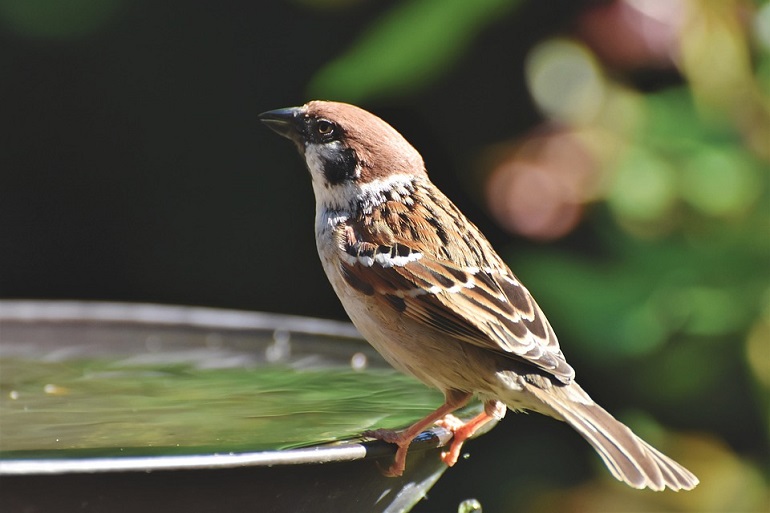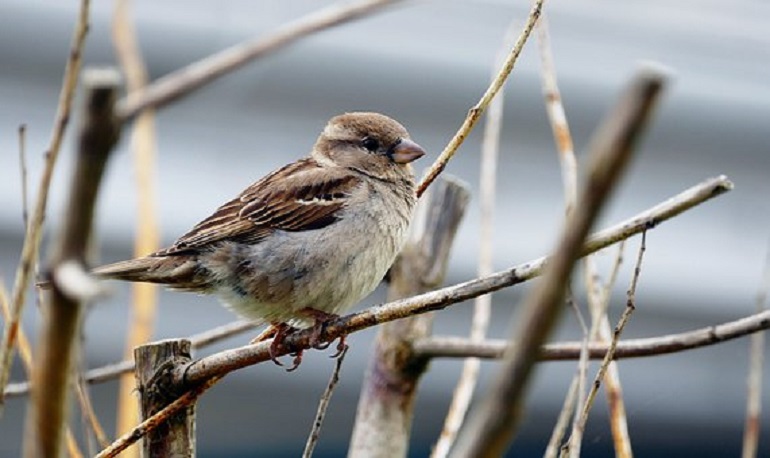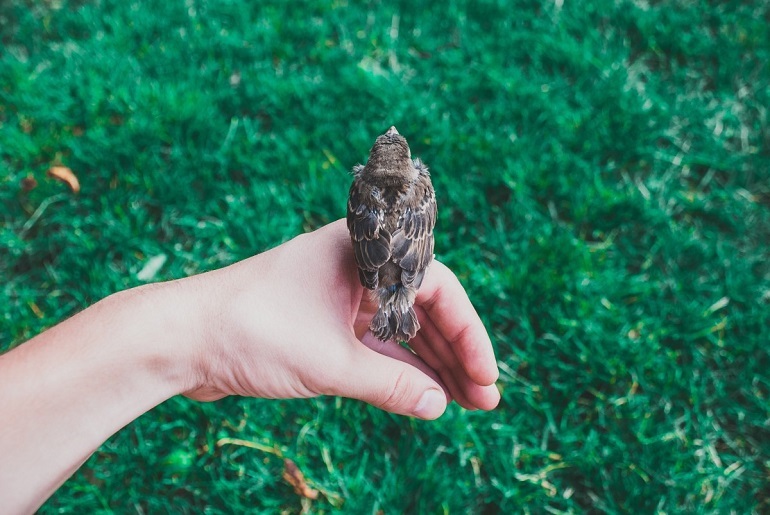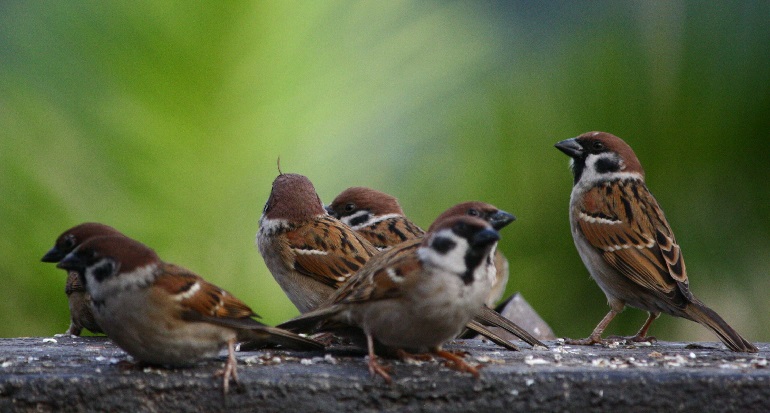The ubiquitous house sparrow, Passer domesticus, a seemingly unremarkable brown bird, holds a fascinating story. From its origins in the Middle East to its global spread alongside human civilization, the sparrow’s adaptability is a testament to its resilience. This exploration delves into the world of these feathered companions, examining their life cycle, behaviors, diet, and the complex relationship they share with us. Discover the secrets behind their chirping calls, their intricate social structures, and the challenges they face in a rapidly changing world. Prepare to see the common sparrow in a whole new light.
It’s not uncommon to see the common sparrow in many countries worldwide. This little bird is so familiar that few people even stop to think about it other than a typical sight. But maybe it is time to stop and smell the roses or the coffee, so to speak, because this familiar bird is a living creature.
Sparrows find partners, have babies and create a family life. In the meantime, they face predators and dwindling habitats. Even so, they must feed themselves in often hostile or barren landscapes come summer or winter.
Clearly, there is much more to these birds than dull plumage and twitters. So join us on tour to discover the intriguing ins and outs of the life of a house sparrow, a bird of many species.
A General Description of the House Sparrow
Sparrow’s Scientific Name:
House sparrows are also known by their scientific name, Passer Domesticus. There are several species in this Passeridae family.
What Does a Sparrow Bird Look Like?
Sparrows are quite delicate-looking birds with small heads and bodies, although their bodies have a reasonably robust appearance.They have fairly small eyes in balance with their head size. Their wings are short, reaching the end of their torso, at which point their tail feathers start, which are also relatively short but proportionate to their overall body size and shape.
How Big are Sparrows?
House sparrows are small birds like all of their subspecies. They weigh between 0,91 to 1.74 ounces, although the house sparrow is the largest of this genus, and weight averages between 0,85 to 1.39 ounces.However, other birds in this species can weigh more, but this is unusual. They reach body-to-tail lengths of 6.6 to 7.10 inches. Their wingspan (width from tip to tip when open) is anything from 9 to 11 inches.
Plumage
Most male birds outshine the females regarding their plumage, and the sparrow is no different. Because of this characteristic, the male house sparrow’s colors are more intense than the female’s.The male of this species has back feathers that are deep, rich chestnut brown interspersed with black stripes and a rufous cap. The bibs below their beaks range from black to creamy beige, surrounded by a black patch on their throats and white chest feathers.Their head markings include black and gray feathers. If they live in the city, their colors may be duller and gray due to pollution. Female house sparrows have light brown, pale, black-gray stripes on their backs, off-white, grayish chest plumage, and white throats.
Voice
Although these birds may not be the best songsters, they sing their hearts out with chirrups and cheeps. Most of the singing comes from the males because they are so proud of their nests that they must advertise them to prospective partners.Song sparrows are marginally different. Their song consists of a repetitive refrain of two to six notes strung together. They start their tune with a trill and vary the tempos of their choruses for up to four seconds.
Types of Sparrows
It is easy to confuse members of the Old World Passer family of true sparrows with those in the New World. Mistakes are understandable since there are 25 to 26 Old World species and 12 subspecies, and they all have similar appearances.
There are even more birds in the New World group, numbering 138, each belonging to various genii, like those in the Old World.
Here is a small sample of the New World sparrows:
- American Tree sparrow – far northern North America
- Grasshopper sparrow – southern Canada, the United States, Central America, Mexico, and the Caribbean.
- Rock sparrow – Iberian peninsula, western north Africa, southern Europe, Palearctic Siberia, and north and central China.
- Chipping sparrow – North America
- Field sparrow – Northern Canada
- Brewer’s sparrow – southwestern U.S., south to central Mexico
- Sooty fox sparrow (fox sparrows are a subspecies)
- Black-chested sparrow – native to Mexico
- White-throated sparrow – Canada
- Yellow-throated bush sparrow – south-central and southern Africa
- Song sparrow – Canada and the U.S.
- Swamp sparrow – northern U.S. and Canada
- White-crowned sparrow – subspecies
- Vesper sparrow – northern U.S. and Canada
- Golden-crowned sparrow – western North America in Alaska and western Canada
- Dark-eyed Junco – North America and the Arctic
Taxonomic Hierarchy of Sparrows
Sparrow species follow this taxonomic hierarchy:
- Kingdom – Animalia
- Phylum – Chordata
- Class – Aves
- Order – Passeriformes
- Family – Passeridae
- Genus – Passer
- Species – Passer domesticus
Sparrows Habitat
Sparrows prefer living near humans, although they do not depend on them for food.
House sparrows are flexible about where they live, so you may find them living in house eaves, roof crevices, or other places inside and outside the home. Besides houses, they live in warehouses, where they can build nests in protective environments.
This species is so adaptable that you may see them living in and around zoos, high-rise buildings, or even in abandoned mines deep beneath the earth’s surface. Most sparrow species live in these spaces or trees, except for tree sparrows which actively build homes in trees.
They thrive in urban areas but do better in suburbs where insects are available in more significant quantities and where nesting is safer. In rural areas, you will typically see large flocks of sparrows around food sources like wheat fields.
No matter how adaptable they are, sparrows do not live in icy regions like the tundra or densely forested areas. Its population density is very low and unevenly distributed in forested and mountainous regions.
However, dry climates or even tropical regions attract this bird. These little brown birds survive in dry climates by eating berries for moisture. They can even ingest salty water if necessary due to their adaptive abilities.
Populations of Old World sparrows are native to Africa, Europe, and Asia. But the house sparrow populations in eastern Asia have dwindled significantly, with the Eurasian tree sparrow replacing them or taking over their habitats altogether.
Fortunately, the house sparrow is hardy, so its numbers flourish in small areas in northern Asia and other countries like Australia and North America, where settlers introduced this bird in the distant past.
Sparrows Behavior
Keep reading to learn the behavior of the Passer Domesticus.
Social Behavior
These brown small birds are social and often mingle with other species to eat and form flocks. They also nest together in the breeding season.
Females fight for male partners for breeding and dominate the pecking order in feeding areas. Other social behaviors include dust and water baths, singing together, feeding on the ground, and flocking in shrubs and trees.
Where Do Sparrows Sleep?
House sparrows live in buildings or trees where they nest in groups. When they sleep, they snugly tuck their beaks under their wings.
Body Maintenance
Sparrows engage in water and dust baths to control parasites. Most birds have a uropygial gland that they stimulate to preen their feathers. Preening individually each feather helps to discourage parasites and distributes preen oil along the feather for waterproofing and temperature control.
Anting is another possible form of grooming. Birds pick up ants or other insects with their beaks and rub them along their feathers to release chemicals that act as pesticides. Otherwise, they will sit near ants to do the same. It is not clear whether sparrows engage in preening or anting.
House Sparrow Diet
House sparrows eat a varied diet. Their food includes seeds and grains, so they eat wheat, oats, corn, rice, and maize. These birds are opportunistic feeders, so they eat seeds from any source, such as weeds or other animal waste. Fruits, nectar, and berries also form a part of their diet.
Worms, beetles, crickets, other insects, ticks, and spiders are fair game. Sparrows also steal food from different species of birds and eat human food like bread but prefer seeds from native plants.
They must eat grit to digest their food, which they get from snail shells, stones, or egg shells. In spring, they tend to tear flowers to eat, especially bright yellow buds.
Locomotion
To fly, this bird must flap its wings in a consistent motion because it cannot ripple or roll its wings.
Its average flight speed is just over 28 miles per hour which it achieves with approximately 15 wing beats every second. This bird hops rather than runs or walks when it is on the ground. If necessary, it can swim and make shallow dives in the water
Sparrows Migration
P. D. bactrianus and P. D. parkini are both subspecies and the only two sparrows that migrate. The first lives in western Turkmenistan, northeastern Iran, western China, and northwestern Pakistan. The second lives in the northwestern regions of the Himalayas.
Migration to the warmer southern climates begins in the fall and spring when temperatures and food resources support their survival. Other species will move short distances of a few miles for better temperatures during seasonal changes.
How Do Sparrows Mate?
Male sparrows build nests and engage in elaborate vocals and physical displays to attract females. Copulation depends on the female’s approval, and the pair frequently mates until the female produces fertilized eggs.
While pairs are monogamous, extramarital affairs or extra-pair copulation takes place. Females discourage this behavior with aggression
House Sparrow Nests
Males build the nests in houses, eaves, cliff holes, tree hollows, cliffs, and anywhere else they feel protected. They also use the open nests of songbirds if they can’t find something better.
Sparrows can even kill other small birds to hijack their nests. Using tree hollows for nesting is common in North America, where they compete with bluebirds for nests. Stealing nests is less prevalent in Europe.
Males make the nests using roots and plant stems on the outside and leaves and grass on the inside. Then, they line the nest with warm feathers, paper, or other soft mediums. Usually, they build a dome for protection over the nest but not always.
Nest sizes range from eight to 13 inches but can be smaller or larger and are home to a bunch of insects. Female sparrows vigorously defend their nests from other females. They will also help to build the nest, but the male is primarily responsible for this duty.
Eggs and Young
When they breed, the females can lay from one to ten eggs in two clutches a year. They may lay more clutches in warmer regions, but Central Asian native birds lay only one clutch yearly because they migrate.
Raising young is the female’s duty, as the nest is not big enough for the male. The male does cover the fledglings for brief periods when the female is away from the nest.
Eggshell colors range from white with brown or gray speckles to a pale green whitish or white, blue shade. They are small (less than an inch long and less than half an inch wide. These eggs weigh about 0.10 ounces.
The babies hatch after about 11 to 14 days and stay in the nest for up to 23 days. They open their eyes on or about the fourth day and develop their first downy feathers at eight days.
Young juveniles quickly grow feathers and a soft pink bill which hardens as they mature. They can feed themselves at two weeks and start learning how to fly.
House Sparrow Lifespan
Cold weather, food quality, and shortages affect their lifespan, so most wild sparrows live from three to five years. However, the record for the longest-living one was a little more than 13 years. Sparrows do not have high survival rates.
Survival
Besides surviving outdoor conditions like the weather, sparrows are vulnerable to parasites, disease, and predators.
Parasites and Disease
Possibly because sparrows live near people, they are susceptible to many of the same diseases, sometimes spreading diseases to people and their pets.
Bacteria
- Escherichia. Coli and Salmonella are present in up to 13% of these birds. These bacteria are more active in the spring and kill massive numbers of these small brown birds.
- Avian pox
- Avian malaria
- Arboviruses – (spread by arthropods (ticks) and include Dengue fever, West Nile virus, Yellow fever, tick-borne encephalitis, Rift Valley fever, and Japanese encephalitis)
These bacteria and viruses cause diseases in birds and people.
Internal Parasites
- Haemosporidian (mainly in rural areas)
- Toxoplasma gondii
External Parasites
- Proctophyllodes and bloodsucking Dermanyssus mites
- Menacanthus (chewing lice that consume blood and feathers)
- Brueelia lice eat feathers only.
- Philopterus fringillae live on the sparrow’s head.
- Argas reflexus and Ixodes arboricola ticks
- Ceratophyllus gallinae fleas
Like bacteria, these parasites cause sickness in humans like brain, lung, and immune disease (toxoplasma gondii) and skin problems, fevers, and more from gamasoidosis, which can worsen.
Predation
Sparrows have a low to medium survival rate of between 45 and 65%, which drops to 20 and 25% of hatchlings reaching their first breeding season. These survival statistics are due to diseases, parasites, and predation.
Most sparrow predators are house cats and raptors like hawks and falcons. Other threats are squirrels, rats, and members of the crow family. Birds like choughs, jays, crows, and ravens are carnivores, so sparrows are a tasty meal.
People are threats as they can hunt these birds for sport. Alternatively, road traffic is a huge culprit in causing their deaths.
Physiology
Every living thing has a circadian rhythm that responds to light and dark. Likewise, organisms display photoperiodism responses to the lengths of night and day.
Scientists studied house sparrows in the laboratory and found they can navigate relative darkness. Their circadian rhythms also remain stable despite long periods of darkness.
They believe that the pineal gland is the source of their navigation abilities because they cannot find their way around without it. Scientists experimented with sparrows by removing the pineal gland from one to transplant it in another to discover this information.
Research also discovered that the hypothalamus plays a vital role in the circadian rhythms of these birds. Photoreceptors in the suprachiasmatic nuclei react to light coming through the bird’s skull into the brain.
This light causes a reaction in blind and seeing sparrows depending on the light, dark phase. When scientists interfered with this light absorption, the blind sparrows could no longer sync their waking and sleeping patterns with external light and dark cycles.
Other scientific experiments revealed varying degrees of entrainment to light, and dark cycles, temperatures, and even chirp playbacks. The results shifted, indicating an impressive capacity to adapt to the environment no matter how challenging.
Relations With Humans
House sparrows share a long cultural association with people, which is why they gave them such a practical, unimaginative name. After all, if birds live in people’s homes, it follows that they should call them “house” sparrows. At least they didn’t just call them house birds.
The relationship between this bird and humans dates back almost 10,000 years. Since then, some birds have become commensal (non-reliant on people but living nearby), while others have remained wild and prefer rural life.
Through time, sparrows have been pests, a food source, and have become the focus of many writers and cultures. People in the old days used to make sparrow pots for nesting. In this way, they had easy access to their food. House sparrows also consume bugs which can be human and animal pests.
Another benefit of these birds is that people used them for falcon prey. They also fed sparrows to feed animals in zoos.
On the downside, they eat crops and spread disease. On the up or downside, Tamil people used sparrows as an aphrodisiac because they bred so prolifically—another practical example of the relationship between house sparrows and people.
The Bible mentions sparrows, as do writers such as Shakespeare and Chaucer. This bird is part of ancient Greek mythology, where it has associations with the goddess of love, Aphrodite, because of its prolific reproductive behavior.
Likewise, Egyptians used it as a symbol to represent something small, prolific, the negative, or the passage of a year.
Perhaps, because they have such a wide distribution, they are also the topic of focus for European immigrants. Their writings suggest that immigrants missed this bird from their homelands, fondly remembering them in their stories. People have also kept house sparrows as pets, but they are challenging to tame.
Maybe in the future, these birds will go down in history as incredibly smart survivors because they’re as adaptable as coyotes and domestic cats.
Are Sparrow Populations Declining? Threats and Conservation!
The house sparrow is a widely distributed wild bird with robust populations in most countries. Due to their widespread habitation, the International Union for Conservation of Nature (IUCN) regards them as being of the least conservation concern and places them on the Red List.
The IUCN also claims that there are likely about 1.4 billion sparrows globally. This organization also says that this bird ranks second on the list as the most abundant bird population in the world. The quelea is first on this list.
To qualify, their large numbers are declining in North America and Western Europe, where their numbers seem to be threatened by finches or the house finch. Population declines are also evident in Australia, Great Britain, and the Netherlands but appear stable in Eastern Europe.
Despite not being endangered, house sparrows have declined significantly in many areas over the past century. Evolutionary or revolutionary changes like steam engines have contributed to population declines. City growth in North America and South Asia has also caused their numbers to decline.
Conservationists attribute declines to a lack of insects, especially for fledglings in the growth phase. Insecticides, GMO crops, planting monoculture crops, and pollution impact insect numbers and diversity.
Hawks also favor these birds for food, causing population decreases. Disease, insufficient nesting sites, and mobile phone radiation threaten their existence in urban areas.
The solution is to plant different crops, vegetables, fruit, and flower gardens to attract insect diversity. Another solution is to provide sparrows with nesting boxes that they can use.
India has declared it the state bird of Delhi to raise awareness of decreasing sparrow populations. Globally, since March 20, 2010, this date is now celebrated as World Sparrow Day.
Conclusion
I didn’t know about World Sparrow Day until I wrote this article. After completing this blog, March 20 will forever be etched in my mind. Add this date to your calendar and spare a thought for how the progress of our “civilization” impacts other living creatures.
After writing this blog, I also understand and appreciate this small bird better. Despite its challenges, it never gives up. Their lives are a valuable lesson for us as the guardians of this planet if we open our eyes.
No matter how tough things get, keep going. But always be aware of how your choices and actions affect the lives of other creatures on this planet.
The common sparrow, despite its ubiquity, reveals a complex story of adaptation and resilience. From their cohabitation with humans to their varied diets and social structures, these little brown birds are far more interesting than they might initially appear. While sometimes considered pests, their role in local ecosystems, consuming insects and seeds, shouldn’t be overlooked. Further study of these adaptable birds can provide valuable insights into urban ecology and the ongoing interplay between humans and the natural world.

